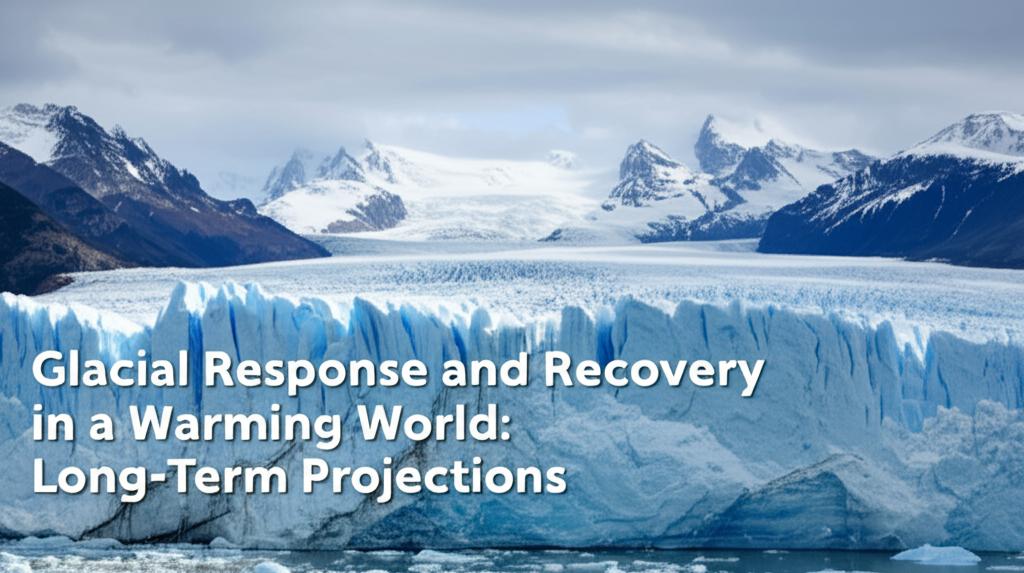The world's glaciers are undergoing a significant and accelerated response to our warming climate, with long-term projections indicating continued ice loss and profound global impacts. Recent research highlights the irreversible nature of much of this glacial retreat, even if global warming is significantly curtailed.
Global glacier mass loss has been dramatic. Between 2000 and 2023, the world’s glaciers lost approximately 6,542 billion tons of ice, an average of 273 billion tons annually. This rate of loss is alarming, with five of the past six years witnessing the most rapid glacier retreat on record, and the period between 2022 and 2024 seeing the largest three-year loss of glacier mass ever documented. Some regions are experiencing particularly severe losses; for instance, glaciers in Central Europe lost nearly 40% of their ice between 2000 and 2023, and Swiss glaciers saw a 10% reduction in their remaining ice in just two years (2022-2023). Even high-altitude glaciers in regions like the Himalayas, previously less affected, are now showing significant ice loss.
Projections for the future indicate that this trend will continue, and in many cases, accelerate. Even if global temperature rise is limited to 1.5°C above pre-industrial levels, it is projected that glaciers will lose an additional 35% of their mass. Should temperatures temporarily overshoot this 1.5°C limit by up to 3°C before stabilizing, glaciers could lose up to 16% more mass by 2200 and an extra 11% by 2500, compounding the already committed losses. The "State of the Cryosphere 2023" report starkly warns that 2°C of global warming will trigger irreversible damage to all of Earth's frozen parts, including mountain glaciers. Under high emission scenarios, some projections forecast total or near-total glacier loss in mid- and low-latitudes by 2100, with up to 80% glacier loss in the Hindu Kush Himalaya region. Indeed, many glaciers in regions such as Western Canada and the USA, Scandinavia, Central Europe, the Caucasus, New Zealand, and the Tropics are not expected to survive the 21st century.
The consequences of this extensive glacial melt are far-reaching. A primary impact is global sea-level rise. Glacier melt is currently the second-largest contributor to rising sea levels, after the thermal expansion of oceans. The ice lost between 2000 and 2023 alone contributed 18 millimeters to global sea-level rise. Projections show that continued melt from glaciers and ice sheets will be a dominant factor in future sea-level increases. The Antarctic ice sheet, for example, holds the potential to raise sea levels by up to 58 meters if it melts entirely. Studies indicate that even under lower emission pathways, Antarctica could contribute up to 6 meters of sea-level equivalent on multi-millennial timescales. Higher emission scenarios could trigger a collapse of the West Antarctic Ice Sheet, leading to even more catastrophic sea-level rise.
Beyond sea-level rise, the decline of glaciers has critical implications for water resources. Mountain glaciers are vital "water towers," storing and releasing fresh water that sustains hundreds of millions of people downstream, particularly during dry seasons. As glaciers shrink, runoff patterns are altered. Initially, melt may increase, but as glaciers enter a phase known as "trough water," meltwater contributions to rivers will significantly decrease, impacting agriculture, hydropower, and drinking water supplies. This is a particular concern for regions like Central Asia and the central Andes. Furthermore, retreating glaciers can increase the risk of natural hazards such as landslides, glacial lake outburst floods (GLOFs), and ice avalanches, endangering communities in mountainous regions. Studies estimate that fifteen million people worldwide are currently at risk from GLOFs.
The prospect of glacial recovery is bleak. Even if global temperatures were to be reversed to pre-industrial levels, new research indicates that glaciers would require centuries, if not millennia, to recover. For smaller glaciers, such as those in the Alps or the Tropical Andes, recovery might be possible by 2500 if warming is drastically curtailed, but for larger polar glaciers, the timeframe for recovery from a significant temperature overshoot would be much longer. This underscores the long-term, multi-generational commitment to ice loss that current and past emissions have already locked in.
The widespread and accelerating melt of glaciers serves as a clear and undeniable indicator of ongoing climate change. The scientific consensus is that the current warming trend and associated glacial shrinkage are unusual from a millennial perspective and directly linked to the increase in atmospheric greenhouse gas concentrations. The United Nations has designated 2025 as the International Year of Glaciers' Preservation to raise awareness of their critical role and the urgent need for action to mitigate climate change and adapt to its unavoidable consequences.

